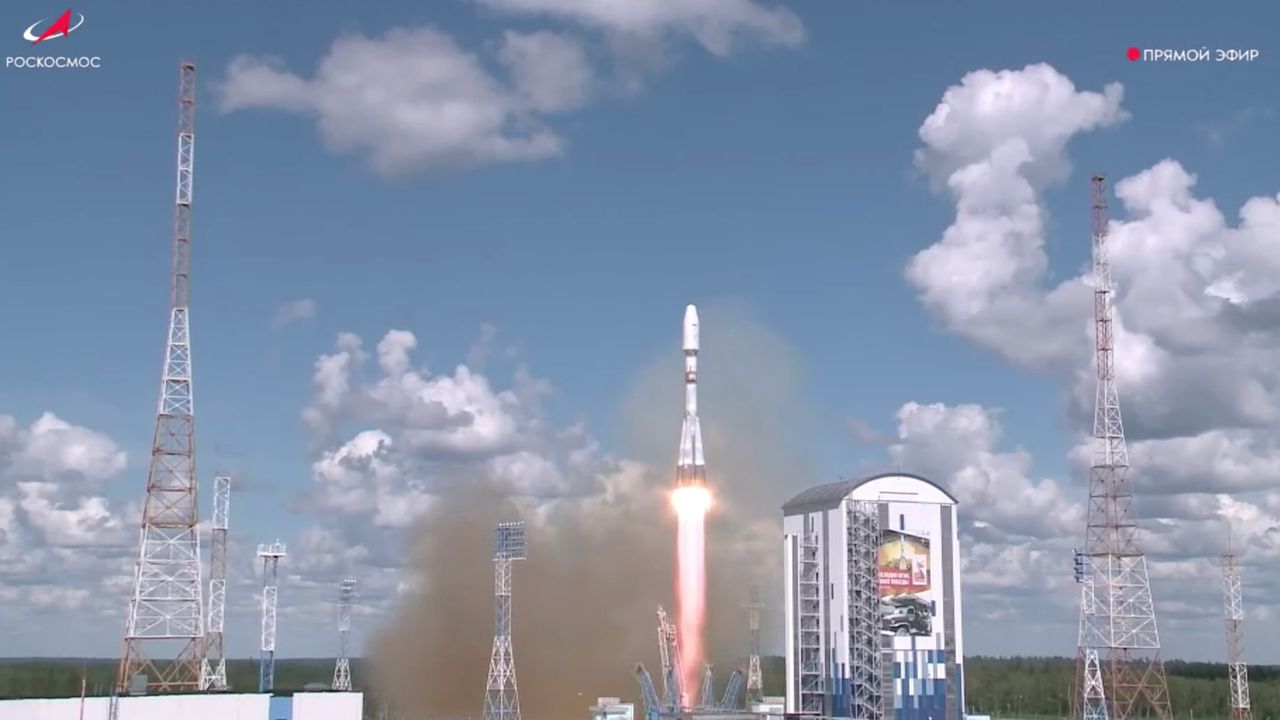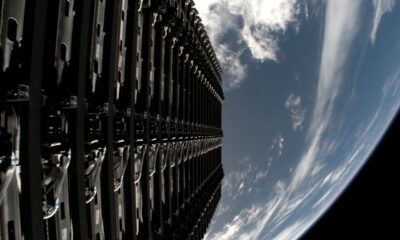Science
Russia Successfully Launches Iranian Satellite and Space Probes

A Russian Soyuz 2.1b rocket successfully lifted off from the Vostochny Cosmodrome in Siberia on July 25, 2024, at 1:54 a.m. EDT (0554 GMT; 8:54 a.m. Moscow time). The launch carried two Russian space weather satellites, the Ionosfera-M 3 and 4, along with an Iranian communications satellite named Nahid-2 and 18 additional cubesats. This mission marks a significant step in enhancing both Russian and Iranian capabilities in space.
The launch was streamed live by the Russian space agency, Roscosmos, and initial reports indicate that all systems functioned properly during the early stages of the mission. Updates on the deployment of the satellites will be provided by Roscosmos following the conclusion of the live broadcast, which ended approximately ten minutes after liftoff.
Mission Objectives and Satellite Functionality
The Ionosfera-M satellites are part of a broader initiative to monitor space weather phenomena, specifically the effects of solar wind on near-Earth environments. The first two satellites in this series were launched in November 2024, and the addition of Ionosfera-M 3 and 4 will complete a mini-constellation orbiting at an altitude of about 509 miles (820 kilometers) above Earth.
According to RussianSpaceWeb.com, these satellites are particularly focused on the ionosphere, a region of the Earth’s atmosphere that extends from approximately 50 to 400 miles (80 to 645 kilometers) above the surface. The ionosphere is crucial for various communication systems as it is significantly impacted by solar activity.
The new satellites will operate in a different orbital plane than their predecessors, thereby expanding the three-dimensional coverage of the Earth’s magnetosphere. This mission also introduces the Ozonometr-TM instrument for the first time, which will measure ozone levels in the upper atmosphere, adding a vital tool for atmospheric research.
Additional Payloads and Future Implications
In addition to the Ionosfera satellites, the Soyuz rocket carried 17 cubesats, all of which were designed and built in Russia. These cubesats will undertake remote-sensing missions and various scientific experiments in orbit. Among them is a 16U cubesat, with the remaining 16 being 3U units, where a “U” refers to a standard cubesat size of 10 centimeters (approximately 4 inches) per side.
The successful launch of the Iranian satellite Nahid-2 is also noteworthy, as it signifies a growing partnership between Russia and Iran in space exploration. This cooperation could lead to enhanced technological exchange and further joint missions in the future.
As space exploration continues to evolve, the implications of this launch extend beyond mere scientific discovery. The data gathered from these satellites is expected to benefit various sectors, including telecommunications and environmental monitoring, thereby contributing to advancements in both civilian and military applications.
-

 Technology5 months ago
Technology5 months agoDiscover the Top 10 Calorie Counting Apps of 2025
-

 Technology3 weeks ago
Technology3 weeks agoOpenAI to Implement Age Verification for ChatGPT by December 2025
-

 Health3 months ago
Health3 months agoBella Hadid Shares Health Update After Treatment for Lyme Disease
-

 Health4 months ago
Health4 months agoAnalysts Project Stronger Growth for Apple’s iPhone 17 Lineup
-

 Health4 months ago
Health4 months agoErin Bates Shares Recovery Update Following Sepsis Complications
-

 Technology5 months ago
Technology5 months agoDiscover How to Reverse Image Search Using ChatGPT Effortlessly
-

 Technology3 months ago
Technology3 months agoElectric Moto Influencer Surronster Arrested in Tijuana
-

 Technology5 months ago
Technology5 months agoMeta Initiates $60B AI Data Center Expansion, Starting in Ohio
-

 Technology2 months ago
Technology2 months agoDiscover 2025’s Top GPUs for Exceptional 4K Gaming Performance
-

 Technology5 months ago
Technology5 months agoRecovering a Suspended TikTok Account: A Step-by-Step Guide
-

 Health5 months ago
Health5 months agoTested: Rab Firewall Mountain Jacket Survives Harsh Conditions
-

 Lifestyle5 months ago
Lifestyle5 months agoBelton Family Reunites After Daughter Survives Hill Country Floods





















